#bicentennial commission
Explore tagged Tumblr posts
Text

Peoples Bicentennial Commission, 1976
Theme Week: Civil Rights 🪧
42 notes
·
View notes
Text
Singapore’s prosperity has long set it apart from many other former British colonies. There is another difference, too: Singapore has clung to honouring its former colonial ruler — and it wants to keep doing so.
Special accolade has gone to Sir Thomas Stamford Raffles, who is considered to have founded modern Singapore in the early 1800s. For decades, Singapore’s textbooks credited Raffles with transforming the island from a “sleepy fishing village” into a thriving seaport. He has been the central character in a larger official narrative that says imperial Britain had set up Singapore for success as an independent nation.
Dedications to Raffles dot the landscape of Singapore. A business district, schools and dozens of other buildings bear his name. Two 2.5-metre likenesses of the man loom large in downtown Singapore.
But a new statue of Raffles, installed in a park in May, has revived a debate about the legacy of colonialism in Singapore. On one side is the broader establishment, which has held up British colonial rule positively. On the other are those who want a closer inspection of the empire that Raffles represented and the racial inequity he left behind, even as Singapore became wealthy.
This divide has surfaced before, perhaps most prominently a few years ago when Singapore celebrated the bicentennial of Raffles’ arrival on the island. Now, the new statue has set off a fresh debate, with critics pointing out that other countries have for years been taking down monuments to historical figures associated with slavery or imperialism, or both.
“The thing about Raffles is that, unfortunately I think, it has been delivered as a hagiography rather than just history,” said Alfian Sa’at, a playwright who wants to see the Raffles statues destroyed. “It’s so strange — the idea that one would defend colonial practice. It goes against the grain on what’s happening in many parts of the world.”
The new statue of Raffles stands next to one of his friend Nathaniel Wallich, a Danish botanist, at Fort Canning Park. Tan Kee Wee, an economist who pooled $330,000 with his siblings to commission the statues, said he wanted to commemorate the pair’s role in founding Singapore’s first botanic gardens, which were his frequent childhood haunt. He donated the sculptures in his parents’ name to the National Parks Board.
Opponents have also criticised the government for allowing the statue to go up at the park because it was the site of the tomb of precolonial Malay kings. The parks board said it considered historical relevance in the installation of the sculptures.
Questions about the statue have even been raised in Singapore’s parliament. In June, Desmond Lee, the minister for national development, responded to one by saying that Singapore did not glorify its colonial history. At the same time, Lee added, “We need not be afraid of the past.”
The plaque for the Raffles statue explains how Singapore’s first botanic gardens “cultivated plants of economic importance, particularly spices”. That, critics said, was a euphemism for their actual purpose: cash crops for the British Empire.
Tan defended the legacy of British colonialists in Singapore, saying they “didn’t come and kill Singaporeans”.
He added: “Singapore was treated well by the British. So why all this bitterness?”
Far from benign
But colonial Britain was far from benign. For instance, it treated nonwhite residents of Singapore as second-class citizens. Raffles created a town plan for Singapore that segregated people into different racial enclaves. And he did not interact with the locals, said Kwa Chong Guan, a historian.
“He was very much a corporate company man, just concerned with what he assumed to be the English East India Co’s interests,” Kwa said.
Raffles landed in Singapore in 1819 as Britain was looking to compete with the Dutch in the Malacca Strait, a crucial waterway to China. At the time, Singapore was under the sway of the kingdom of Johor in present-day Malaysia. Raffles exploited a succession dispute in Johor to secure a treaty that allowed the East India Company to set up a trading post in Singapore.
Within a handful of years, Singapore was officially a British territory. Convict labour, largely from the Indian subcontinent, was crucial to its economic development. So, too, were Chinese immigrants, which included wealthy traders and poor labourers.
Singapore achieved self-governance in 1959, then briefly joined Malaysia before becoming an independent republic in 1965. It has since built one of the world’s most open economies and among its busiest ports, as well as a bustling regional financial hub.
In recent years, the government has acknowledged, in small ways, the need to expand the narrative of Singapore’s founding beyond Raffles. Its textbooks now reflect that the island was a thriving centre of regional trade for hundreds of years before Raffles arrived.
In 2019, officials cast the commemoration of Raffles’ arrival as also a celebration of others who built Singapore. A Raffles statue was painted over as if to disappear into the backdrop. Placed next to it, though only for the duration of the event, were four other sculptures of early settlers, including that of Sang Nila Utama, a Malay prince who founded what was called Singapura in 1299.
To some historians and intellectuals, such gestures are merely symbolic and ignore the reckoning Singapore needs to have with its colonial past. British rule introduced racist stereotypes about nonwhites, such as that of the “lazy” Malay, an Indigenous group in Singapore, that has had a lasting effect on public attitudes. Colonialism led to racial divisions that, in many ways, persist to this day in the city-state that is now dominated by ethnic Chinese.
“If you only focus on one man and the so-called benevolent aspect of colonialism, and you don’t try to associate or think about the negative part too much, isn’t that a kind of blindness, or deliberate amnesia?” said Sai Siew Min, an independent historian. (Story continues below)
Role of race
Race relations played a role in Raffles’ ascension in Singaporean lore. Soon after Singapore became independent, the governing People’s Action Party — which remains in power decades later — decided to officially declare Raffles the founder of Singapore. Years later, S Rajaratnam, who was then the foreign minister, said that anointing a Malay, Chinese or Indian as its founder would have been fraught.
“So we put up an Englishman — a neutral, so there will be no dissension,” Rajaratnam said.
The decision was also meant to indicate that Singapore remained open to the West and free markets.
In a 1983 speech, Rajaratnam acknowledged that Raffles’ attitude toward the “nonwhite races was that without British overlordship the natives would not amount to much”.
Critics of the Raffles statues also argue that his legacy should reflect his time on the island of Java. Although Raffles outlawed slavery in Singapore, he allowed trading of slaves in Java, including children as young as 13, according to Tim Hannigan, who wrote a book about Raffles.
The new statues of Raffles and Wallich were created by Andrew Lacey, a British artist. The sculptures evoke the two men as apparitions — symbolism that Lacey said represented the world’s evolution away from the West.
Lacey said he had “wrangled” with the public reaction toward his sculptures and he had no qualms if Singaporeans wanted to take them down, destroy them or replace their heads with the Malay gardeners who were instrumental in creating the botanic gardens.
“I was cognisant of the complexities of making any dead white male,” he said of Raffles. “I wasn’t cognisant of the degree of complexity around him.”
16 notes
·
View notes
Text
As a result of experiments I conducted at the Center for Cognitive Studies at Harvard in the early 1960s, I became convinced that wholeness, "the wholeness we see," is a real, well-defined structure, not merely a cognitive impression.
Christopher Alexander (PDF) in the Preface to the paper back editon of Notes on the Synthesis of Form (1971).
I enjoyed an interview with Whitehead scholar Matthew Segall by Jeffrey Mishlove recently. I lingered on the topic of science education they broached and my sense that changes will come perhaps sooner rather than later.
One of the books that came to mind was Notes on the Synthesis of Form first published in 1964. I would like to explain a little about why it was important to me.
In college, I think it was the spring of 1976, I lived in a house with roomates. There were four books all of us read, and maybe other people who visited the house did too. There was quite a lot of discussion about them:
Operating Manual For Spaceship Earth by Buckminster Fuller
Design For The Real World: Human Ecology and Social Change by Victor Papanek
Common Sense II: The Case Against Corporate Tyranny by The People's Bicentennial Commission, Jeremey Rifkin, author.
The Oregon Experiment by Christopher Alexander
Together the books provided a moral critique of economics. design and mass consumption, work and democracy, and the architecture of where we live.
I dropped out of college, but had so many questions and these books were pointing in the direction of some coherent answers. The Oregon Experiment interested me and I wanted to learn more about Christoher Alexander. I went to the library and poured over Notes on the synthesis of Form. I really didn't grok any of the math, but found the figures intriqing. What I took from the book was very close to it. And it was very important change in my epistemology of science.
Later I began reading Steps to an Ecology of Mind by Gregory Bateson. I think that discovering Christopher Alexander gave me an opening to Bateson's ideas.
4 notes
·
View notes
Text

US 1971 8¢ Bicentennial Commission Emblem
#us#usa#1970s#bicentennial#anniversary#revolutions#emblem#stamp#stamps#philately#stamp collection#snail mail#postage#postage stamp#usps
4 notes
·
View notes
Text

#Nixon50 #OTD 10/18/1973 President Nixon met with Senator Pete V. Domenici (R-New Mexico), Congressman Manuel Lujan, Jr. (R-New Mexico), Congressman Harold L. Runnels (D-New Mexico), and Max L. Friedersdorf, Deputy Assistant. Senator Domenici and Congressmen Lujan and Runnels presented the President with a wood carving from the New Mexico American Revolution Bicentennial Commission - a bicentennial logo carved by an inmate at the Penitentiary of New Mexico. (Image: WHPO-E1671-03A)
3 notes
·
View notes
Text





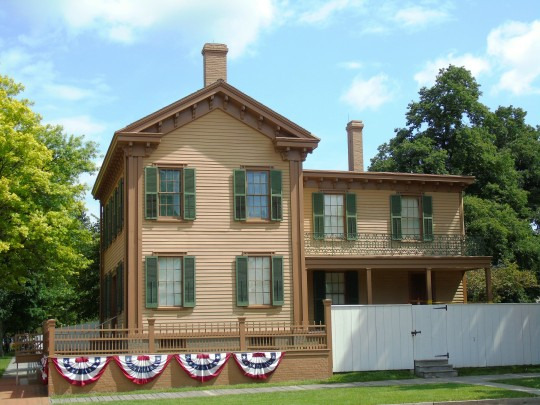


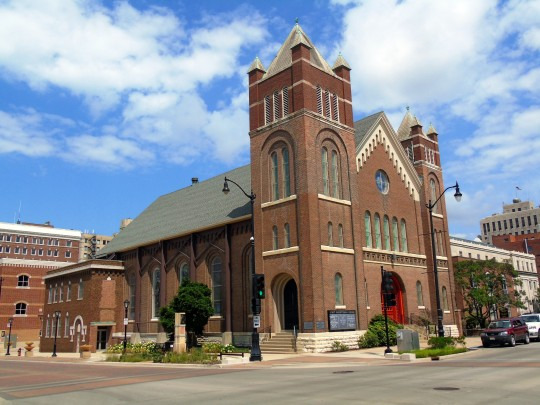



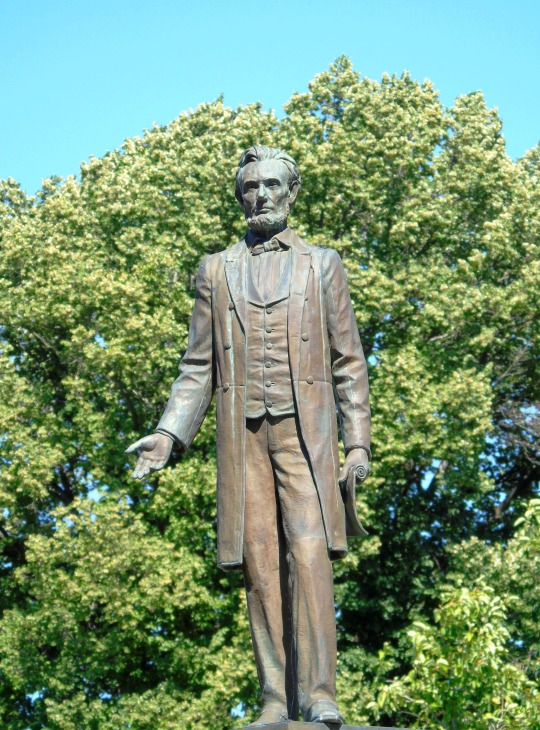
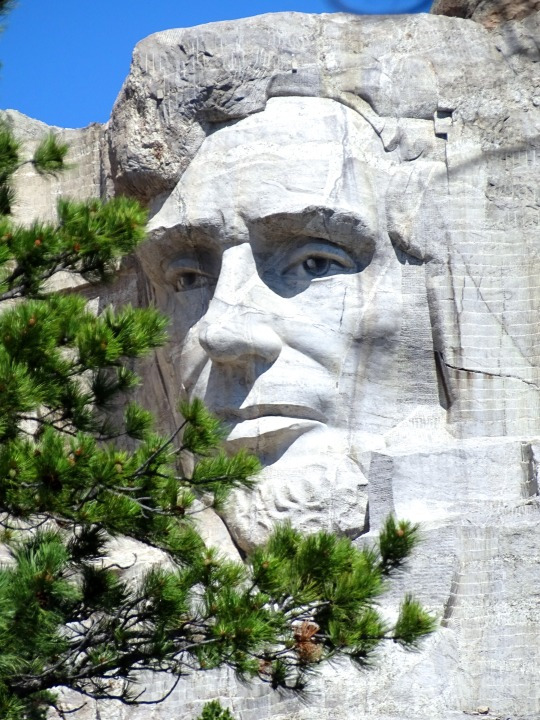




Lincoln's Birthday
Abraham Lincoln, the 16th President of the United States, was born on February 12, 1809. Over the years, he has become known as one of the greatest American presidents of all time. At the time of his death, in 1865, many saw him as a martyr, and it wasn't too long afterward that his birthday began being observed informally. In the mid-1870s, Julius Francis of Buffalo, New York, began honoring Lincoln on his birthday and petitioned Congress to make the day a legal holiday.
But, as of 2019, Lincoln's Birthday is not, nor has it ever been, its own federal holiday. On the state level, a handful of states celebrate Lincoln's birthday on its actual date. In recent years, it has been celebrated as a state holiday in Ohio, Missouri, New York, Illinois, and Connecticut. It is celebrated as such in California as well, but since 2009, it has no longer been a paid holiday there. Some states, Indiana being one example, have officially celebrated Lincoln's birthday, but not on the actual date of his birth. In prior years, more states officially celebrated his birthday; twenty-four states celebrated it in 1940, and ten celebrated it in 1990.
Although Lincoln's Birthday is not celebrated on its own on the federal level, it is often implicitly or explicitly celebrated as part of Washington's Birthday, which is usually called Presidents' Day, taking place on the third Monday in February. In some states, this holiday is known as Washington and Lincoln Day. However, there are other variations of the day; some states specifically celebrate only Washington, and some celebrate Washington and another president, such as Thomas Jefferson.
Besides state observances and informal federal observances, Lincoln's Birthday is celebrated at many places associated with him. Each year, there is a wreath-laying ceremony at the Abraham Lincoln Birthplace National Historical Park in Kentucky. Since its dedication in the early 1920s, there has also been a wreath-laying ceremony at the Lincoln Memorial, which is organized by the Lincoln Birthday National Commemorative Committee and the Military Order of the Loyal Legion of the United States. The reading of the Gettysburg Address is also a part of this event. For his bicentennial, on February 12, 2009, the Abraham Lincoln Bicentennial Commission organized a special event at the Lincoln Memorial. That same day, four new Lincoln pennies were released, with backs that depicted different stages of Lincoln's life. Each year on the day, events are also held at the Abraham Lincoln Presidential Library and Museum in Illinois. The Republican Party holds Lincoln Day dinners around the date because Lincoln was the first Republican president.
Abraham Lincoln was born in a one-room log cabin just south of present-day Hodgenville, Kentucky. When he was two, his family moved to Knob Creek Farm, which is northeast of Hodgenville. In 1816, he moved with his family to Indiana. He did not get much schooling while growing up and often had to work to help support his family, doing things such as farming and splitting rails for fences.
In 1830, his family moved to Macon County, Illinois. He got a job on a boat, hauling freight down the Mississippi River to New Orleans. He then settled in West Salem, Illinois, where he worked as a shopkeeper in a store as well as a postmaster. In 1832, he was a captain in the Black Hawk War and ran for a spot in the Illinois state legislature, which he lost. However, he ran again in 1834 and was successful. As a member of the Whig Party, he was influenced by other Whigs such as Henry Clay and Daniel Webster. Some policy positions he held at the time were in opposition to slavery's spread to the territories, and a goal of expanding the United States with a focus on commerce and cities.
Lincoln decided to teach himself law and passed the bar in 1836. Shortly thereafter, he moved to Springfield, a few years before it became the state's capital. He married Mary Todd in 1842; they had four sons together, although only one would live into adulthood. Lincoln was elected to the U.S. House of Representatives in 1846, but pledging to serve only one term, he returned to Springfield in 1849. His opposition to the Mexican-American War is the most remembered element of his term.
Politics were in Lincoln's blood, and he decided to return to them in 1854. That year, Democrat Stephen Douglas had helped get the Kansas-Nebraska Act passed, which said there should be popular sovereignty when it came to slavery in the territories, meaning that voters should be able to decide for themselves if slavery should be allowed in them. On October 16, 1854, in Peoria, Illinois, Lincoln debated Douglas about the act. During the debate, he spoke against slavery and said it was incongruous with the Declaration of Independence. That same year, he joined the recently formed Republican Party, a party that was created in large part on the belief that slavery should not expand into the territories.
In 1858, Lincoln ran against Stephen Douglas for a U.S. Senate seat in Illinois. In June, he gave his house divided speech, which said the country couldn't go on existing half slave and half free. Lincoln lost the race but gained national recognition, in part because of the debates he had with Douglas.
The Republicans nominated Lincoln as their candidate for president in the 1860 election. It was a four-way race: Stephen Douglas was the nominee of northern Democrats, John C. Breckenridge was the nominee of southern Democrats, and John Bell was the nominee of the Constitutional Union Party. Breckenridge and Bell split the southern votes, and Lincoln won most of the north. He won the electoral vote count, and thus the presidency. By the time he had taken the oath of office in March 1861, seven states had already seceded from the Union; the Civil War began the following month.
The Civil War engulfed Lincoln's presidency, but he proved to be an adept war leader. After George McClellan failed to pursue the Confederate Army after the Union victory at Antietam in September 1862, Lincoln removed him of his position of Commanding General. Lincoln also issued the Emancipation Proclamation after Antietam, which went into effect on January 1, 1863, freeing slaves in the southern states (slaves in the border states loyal to the Union were not freed). The emancipation laid the groundwork for slaves to be freed everywhere—the Thirteenth Amendment went into effect in 1865, after Lincoln's death.
In November 1863, Lincoln delivered the Gettysburg Address at a dedication of the national cemetery at Gettysburg. It became one of the most famous speeches in American history. Although Lincoln has been lauded for fulfilling the commander-in-chief role, he did so not completely without controversy, as he suspended habeas corpus.
In 1864, Lincoln faced the general he had relieved, George McClellan, in his bid for reelection. He prevailed, and at his second inaugural he spoke of the end of the war, and the need for a conciliatory reconstruction "with malice toward none; with charity for all." On April 9, 1865, Confederate commander Robert E. Lee surrendered to Union Commanding General Ulysses S. Grant at Appomattox Court House. Two days later, Lincoln gave a speech on the White House lawn.
On April 14, which happened to be Good Friday, President Lincoln was shot in the back of the head by John Wilkes Booth while at Ford's Theatre. He died early the next morning at a boarding house across from the theatre. Today we remember his remarkable life and his contributions to the United States at such a difficult time in its history.
How to Observe Lincoln's Birthday
The following are some ways to celebrate Lincoln's Birthday:
Visit the Abraham Lincoln Birthplace National Historical Park. This encompasses both his birthplace south of Hodgenville, as well as Knob Creek Farm, where he lived next. A wreath-laying ceremony takes place at the park.
Stop at the Lincoln Museum in downtown Hodgenville as well as the nearby Abraham Lincoln Statue.
Stop at other places along the Kentucky Lincoln Heritage Trail.
Attend the wreath-laying ceremony at the Lincoln Memorial.
Visit the Abraham Lincoln Presidential Library and Museum and The Lincoln Tomb in Springfield, Illinois.
Stop at the Lincoln Boyhood National Memorial in Indiana or at the Abraham Lincoln Library and Museum in Tennessee.
Go to Ford's Theatre.
Read a book about Lincoln.
Read some of Lincoln's own writings and speeches.
Source
#Lincoln's Birthday#Abraham Lincoln#born#12 February 1809#anniversary#Lincoln Memorial#Henry Hering#Lincoln Home#Lincoln Home National Historic Site#Seated Lincoln#Augustus Saint Gaudens#First Presbyterian Church of Springfield#Lincoln Family Church#statue#art#Washington DC.#Springfield#Indianapolis#Chicago#USA#photography#history#travel#original photography#vacation#tourist attraction#landmark#cityscape#architecture#US history
0 notes
Text

State Representative Alveda Celeste King (January 22, 1951) is an activist, author, and former state representative for the 28th District in the Georgia House of Representatives.
She was born in Atlanta. She was the first of five children of A. D. King, the younger brother of Martin Luther King Jr., and his wife Naomi (Barber) King.
She is a Fox News Channel contributor. She once served as a senior fellow at the Alexis de Tocqueville Institution. She is the founder of Alveda King Ministries.
She studied journalism and sociology as an undergraduate and received an MA in business management from Central Michigan University. She received an honorary doctorate from Saint Anselm College.
She is a member of the Frederick Douglass Bicentennial Commission, having been nominated to the position by President Donald Trump in 2018.
She supported Reverend Jesse Jackson for president.
She was a supporter of Herman Cain for president and defended him from sexual harassment claims. She co-founded Women for Cain.
She voted for Donald Trump in the 2016 presidential election, stating, “I pray that all polar opposites learn to Agape Love, live, and work together as brothers and sisters—or perish as fools. While I voted for Mr. Trump, my confidence remains in God, for life, liberty, and the pursuit of happiness. Prayers for President-elect Trump, Congressman John Lewis, and everyone including leaders.”
For the 2020 presidential election, she was an advisory board member of Black Voices for Trump.
She married Eddie Clifford Beal, she married Jerry Ellis, and married Israel Tookes. She has six children. #africanhistory365 #africanexcellence
0 notes
Text
For Fifth Avenue's 200th Birthday: On the Misnamed Fifth Avenue Theatre
Hungry I guess for any kind of positive story to tell, local press in New York is trumpeting the news that Fifth Avenue has now reached its bicentennial as one of the city’s main thoroughfares (commissioned in 1811, opened in 1824). The other big Fifth Avenue news is that Mayor Adams has announced a project to widen the sidewalks on the stretch where there’s expensive shopping. Somehow there is…

View On WordPress
1 note
·
View note
Text

Along the Columbia: Maya Lin and the Confluence Project will be on display at Whitman’s Maxey Museum from April 23 to July 30, 2021. Over twenty years ago, Lin was commissioned by a group of arts patrons and tribal leaders of the Columbia River Plateau and the Pacific Northwest to create a major work of public art in remembrance of the bicentennial of Lewis and Clark’s 1804–1806 journey to the Pacific Ocean. The result is the Confluence Project. Left: Maya Lin in 2005 working on a basalt fish-cleaning table for Cape Disappointment State Park on the Washington coast. (Whitman College and Northwest Archives); Right: The Vancouver Land Bridge, completed in 2008, was a collaboration between the architect Johnpaul Jones and the artist and architect Maya Lin. (Photo: Bruce Forster)
0 notes
Text
AIFF| Arlington 250
ABOUT ARLINGTON 250
ARLINGTON PREPARES TO COMMEMORATE ITS PLACE IN REVOLUTIONARY WAR HISTORY
The American Revolution began on April 19, 1775, with battles in Arlington — then known as Menotomy — Lexington, and Concord. In 2025, Arlington and other local towns will honor the 250th anniversary of that pivotal day and time period with a series of events and commemorations.
In Arlington, the Semiquincentennial (Arlington 250) Committee is planning the town’s Revolutionary War commemoration, drawing inspiration from local bicentennial celebrations in 1975, which then-President Gerald Ford and other local, national, and international dignitaries attended. The committee is aiming for Arlington’s commemoration to breathe new life into cultural tourism, and to have a positive economic impact on Arlington and the entire region. To that end, the committee is collaborating with neighboring communities to maximize efforts around marketing and public relations, fundraising, event coordination, public safety, and transportation.
As planning began and the committee members commissioned the commemoration’s logo, they faced a dilemma. In 1775, the town of Arlington did not exist; in 1635, settlers called their informal community Menotomy, derived from the Indigenous term for “flowing water.” Revolutionary War-era diaries, logs, and maps refer to Menotomy, not Arlington. The area was formally incorporated as West Cambridge in 1807 along with a section of present-day Belmont. It wasn’t until 1867 that the town’s name became Arlington as a tribute to the armed forces members buried at Arlington National Cemetery in Virginia. The name Menotomy faded over time, along with many stories and details about the area’s important role in the American Revolution.
One of the committee’s goals is to broaden awareness of Arlington’s role on April 19, 1775, the day of Paul Revere’s iconic ride, when the Colonial militia fought British troops at Lexington Green and Old North Bridge in Concord. As the British retreated toward Boston through Lincoln, Lexington, and Menotomy along what is now called the Battle Road Byway, they were ambushed by a succession of Colonial minutemen. The attacks were relentless and culminated in the fiercest encounters of the day. With more than 70 deaths, the Battles of Menotomy were deadlier than the combined casualties from the battles of Lexington and Concord earlier that day. Battles at Arlington’s Foot of the Rocks and the Jason Russell House saw the most casualties. Many of Menotomy’s fallen soldiers and minutemen now rest in the Old Burying Ground on Pleasant Street in Arlington Center. The graves include an unmarked one holding unknown British soldiers.
The Untold Stories of Menotomy
Considering all this, the theme “The Untold Stories of Menotomy” resonated with the Arlington 250 Committee. It is a fitting tagline to accompany the logo, which was designed by Katie McLaughlin of Locality Studio. The result features a silhouette of the historic Jason Russell House, which is on the corner of Mass. Ave. and Jason Street. Through the anniversary celebrations, the logo and tagline will appear in print and digital media as well as on merchandise and promotional materials.
“The 250th is an important opportunity to inform a new generation of Arlington residents, as well as visitors to the area, about our town’s important place in history,” says Angela Olszewski, Arlington 250 Committee co-chair. “We can always learn about our town’s historical significance but an anniversary like this is a chance to delve into and lift it up in a special way.”
The Arlington 250 Committee includes representatives from Arlington’s select board, school committee, tourism and economic development (A-TED) committee, historical society, chamber of commerce, and commission for arts and culture (Arts Arlington); town meeting; the Arlington delegation to the Battle Road Scenic Byway Committee; the Menotomy Minutemen; and the community at large working in partnerships with other towns and planning entities. Revolution 250 is a non-profit organization that is capturing the history of the revolution in Massachusetts; Freedom’s Way promotes a place-based identity for 45 communities in MA/NH; the MA Office of Travel & Tourism has created MA 250, a statewide marketing campaign commemorating the past and celebrating the future of our Commonwealth. America250 is a nonpartisan initiative working to engage every American in commemorating the 250th anniversary of our country as the largest and most inclusive anniversary observance in our nation’s history.
Residents can get involved by joining subcommittees, such as for arts and culture; diversity, equity, and inclusion; and others. For a list of opportunities and more details visit the Committee’s questionnaire and check this webpage regularly. We will be posting events, volunteer opportunities, and more
0 notes
Text
Tucked at the end of Dewey Avenue, you'll find a darkened stone fort that looks out of place among the modern tree-lined streets, proper sidewalks, and manicured front yards. It is the only standing remnant of an arsenal and a massive gate.
The Spanish Navy authorized the construction of the Arsenal de Olongapo on March 8, 1885, but the actual work started in September of that year. First, a harbor and a canal were built to make an island and separate the arsenal from the mainland. The newly built canal served as an additional line of defense over which a bridge was constructed. To enter the arsenal, two impressive gates were built to the west and south.
The main entrance to the arsenal was the west gate, which still stands today. This gate was equipped with gun ports and also served as a jail. Artilleries were stationed beside both gates. Thousands of tons of earth and rock from Kalalake in Olongapo had to be brought in as fill. The magnitude of this quarrying was so huge that a hill eventually disappeared and became a lagoon in the area now known as Bicentennial Park.
During the Philippine-American War, Filipinos occupied the arsenal, whereas the Americans used the Sangley Naval base in Cavite. It came to a fore on September 23, 1899 when the arsenal was attacked and destroyed by the Americans. They would go on to build the Subic Naval Base, the largest U.S. defense facility until 1992.
On November 26, 2013, the Spanish Gate was declared a historical landmark by the National Historical Commission of the Philippines.
8 notes
·
View notes
Text
Photographer Research 2
Dream Streat by W. Eugene Smith, in his work, he took photos of Pittsburgh. He produced hundreds of photos for journalist and author Stefan Lorant's book to commemorate the city's bicentennial. He documented a vibrant industrial metropolis, its steel mills, its people, and its scenery. While working on this project, he was commissioned to spend only three weeks in Pittsburgh but ended up staying a year while compiling nearly 17 thousand photos. In his work, he wanted to portray not only Pittsburgh but also the mid-century, postwar America.
His works are quite beautiful, and they contain many old century pictures of what it was like back in the 1950. His work is very inspiring if I ever want to create some kind of project that involve the 1950 vibes.
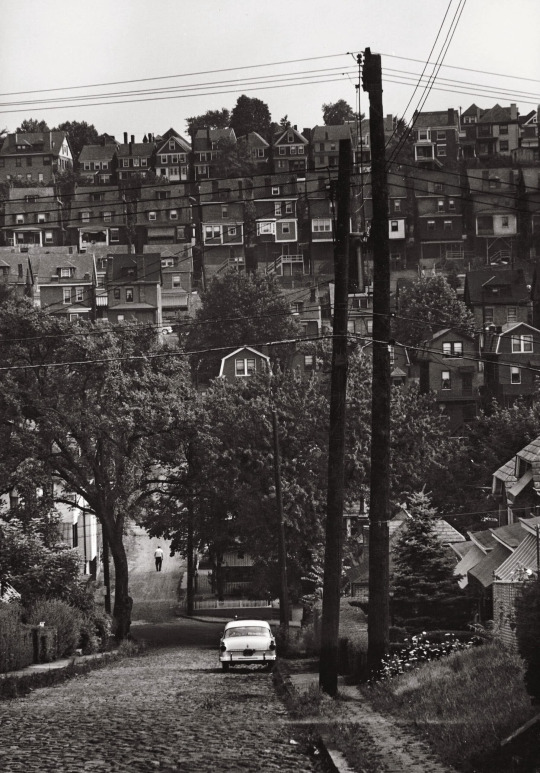
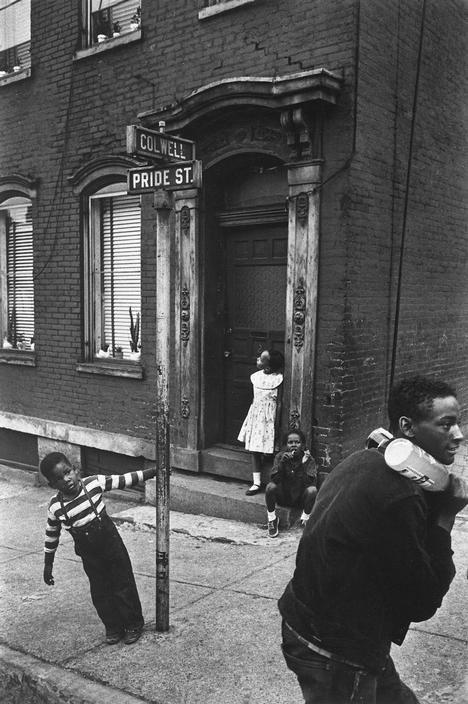
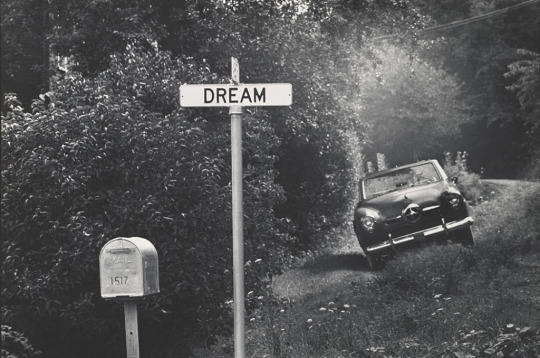
4. Dream Street. Pittsburgh, 1955. | Magnum Photos Store
0 notes
Text
More at Hyperallergic:
After more than four decades, Barbara Carrasco’s 80-foot-long mural “L.A. History: A Mexican Perspective” is finally getting a permanent home. The painting was initially commissioned for the city’s bicentennial in 1981 by the Community Redevelopment Agency (CRA), which eventually rejected the work on the grounds that several scenes were too controversial. [...]
The CRA deemed 14 of the 51 scenes too controversial, including those illustrating the 1871 lynching of 22 Chinese men and boys; the displacement of families in Chavez Ravine to make way for the Dodger Stadium; the 1943 Zoot Suit Riots, in which US servicemen attacked Latino pachucos in downtown LA; and the whitewashing of David Alfaro Siqueiros’s 1932 mural “America Tropical,” an indictment of US imperialism depicting a crucified Indigenous figure.



instagram
5 notes
·
View notes
Text
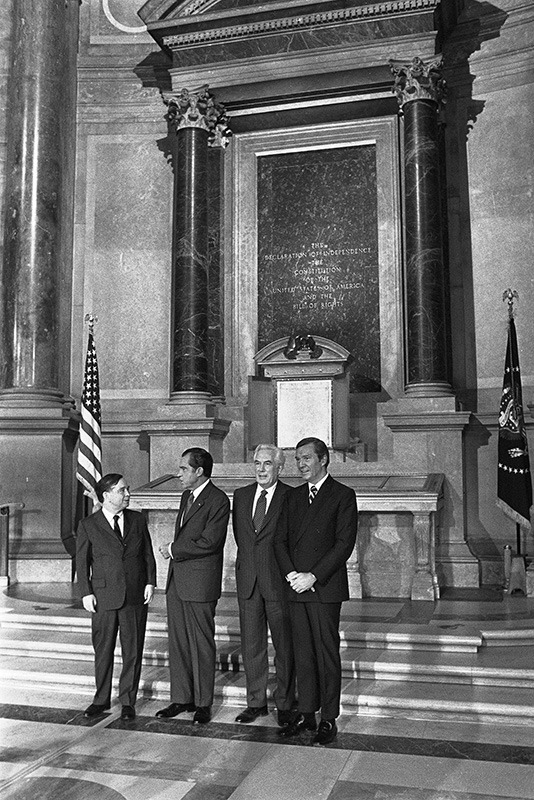
#OTD 7/3/1971 President Nixon, Supreme Court Chief Justice Warren Burger, bicentennial commission chair Daniel Mahoney, and House Speaker Carl Albert marked the opening of five-year Bicentennial Era in the National Archives Rotunda where the Declaration of Independence, the Constitution of the United States, and the Bill of Rights are displayed. (Image: WHPO-6748-13)
1 note
·
View note
Text


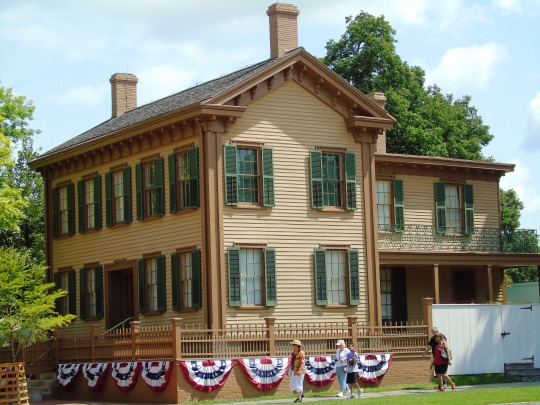
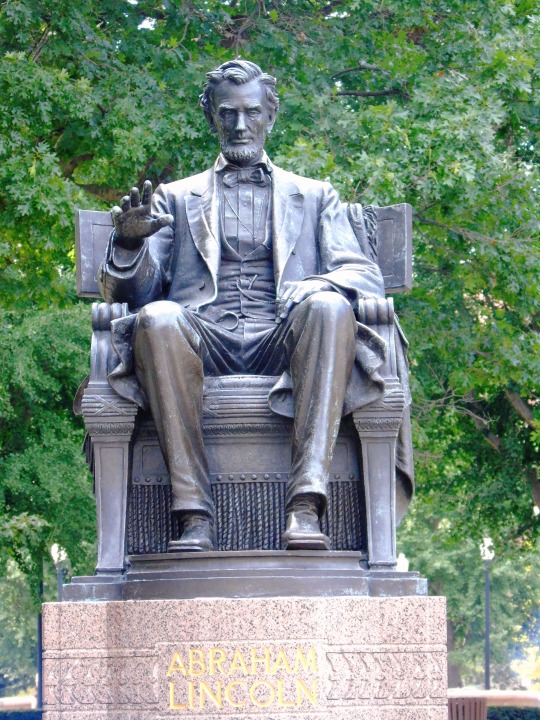

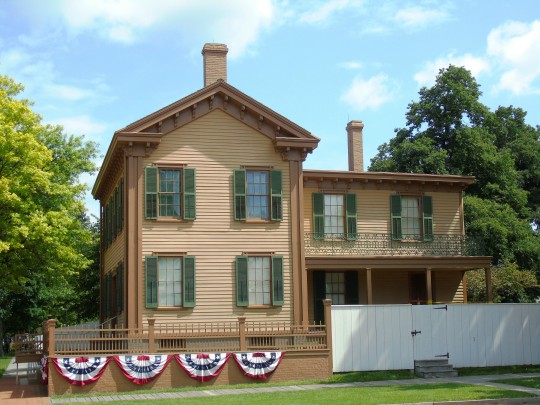
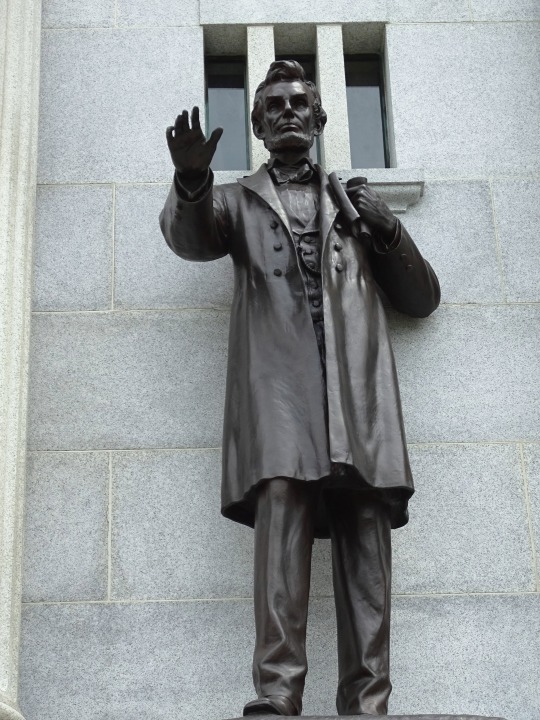
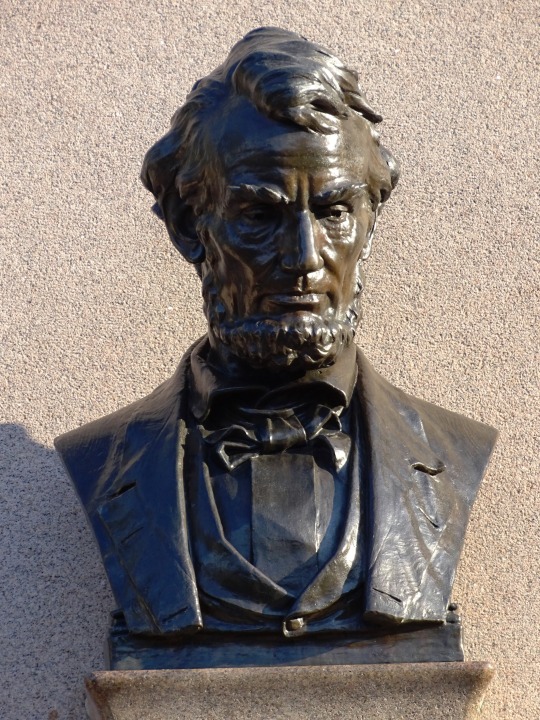
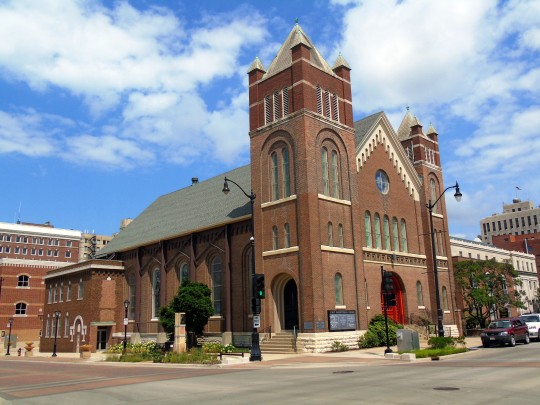
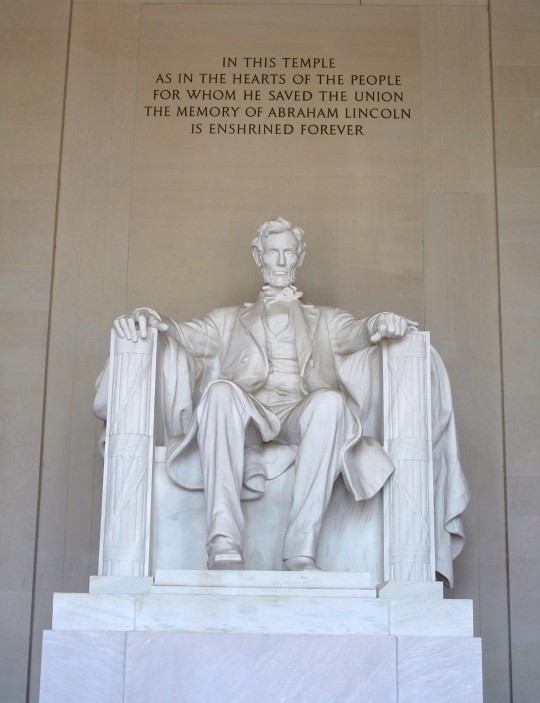
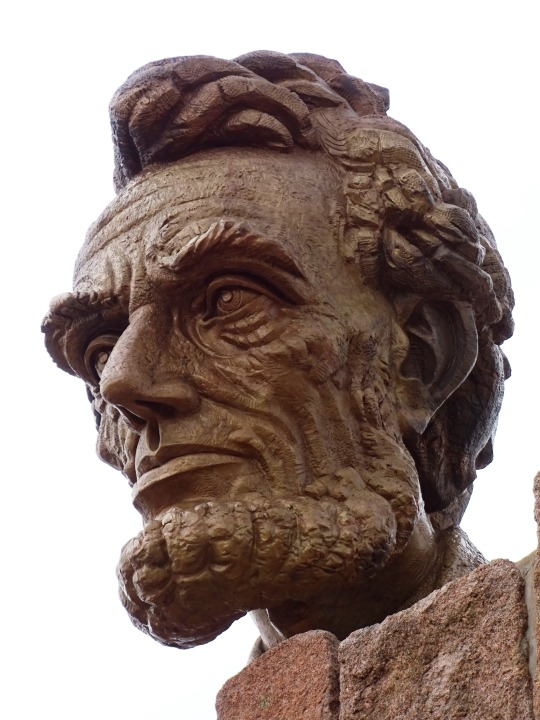
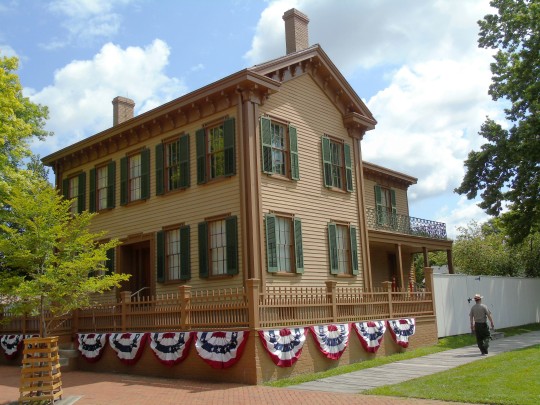




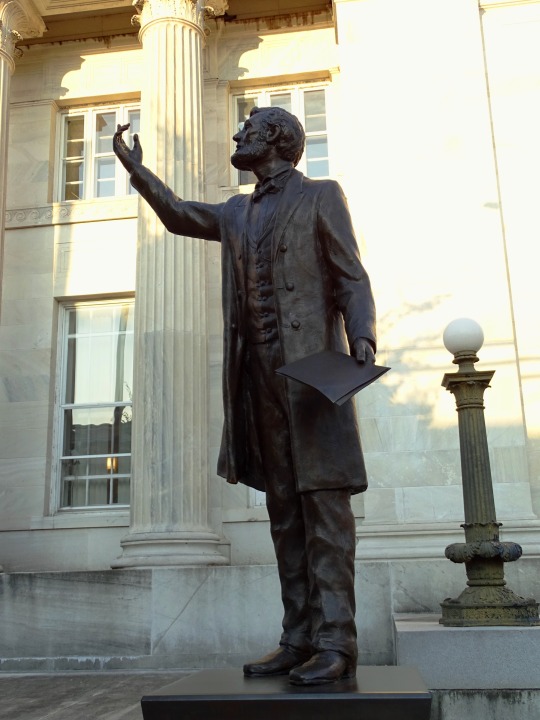



Lincoln's Birthday
Abraham Lincoln, the 16th President of the United States, was born on February 12, 1809. Over the years, he has become known as one of the greatest American presidents of all time. At the time of his death, in 1865, many saw him as a martyr, and it wasn't too long afterward that his birthday began being observed informally. In the mid-1870s, Julius Francis of Buffalo, New York, began honoring Lincoln on his birthday and petitioned Congress to make the day a legal holiday.
But, as of 2019, Lincoln's Birthday is not, nor has it ever been, its own federal holiday. On the state level, a handful of states celebrate Lincoln's birthday on its actual date. In recent years, it has been celebrated as a state holiday in Ohio, Missouri, New York, Illinois, and Connecticut. It is celebrated as such in California as well, but since 2009, it has no longer been a paid holiday there. Some states, Indiana being one example, have officially celebrated Lincoln's birthday, but not on the actual date of his birth. In prior years, more states officially celebrated his birthday; twenty-four states celebrated it in 1940, and ten celebrated it in 1990.
Although Lincoln's Birthday is not celebrated on its own on the federal level, it is often implicitly or explicitly celebrated as part of Washington's Birthday, which is usually called Presidents' Day, taking place on the third Monday in February. In some states, this holiday is known as Washington and Lincoln Day. However, there are other variations of the day; some states specifically celebrate only Washington, and some celebrate Washington and another president, such as Thomas Jefferson.
Besides state observances and informal federal observances, Lincoln's Birthday is celebrated at many places associated with him. Each year, there is a wreath-laying ceremony at the Abraham Lincoln Birthplace National Historical Park in Kentucky. Since its dedication in the early 1920s, there has also been a wreath-laying ceremony at the Lincoln Memorial, which is organized by the Lincoln Birthday National Commemorative Committee and the Military Order of the Loyal Legion of the United States. The reading of the Gettysburg Address is also a part of this event. For his bicentennial, on February 12, 2009, the Abraham Lincoln Bicentennial Commission organized a special event at the Lincoln Memorial. That same day, four new Lincoln pennies were released, with backs that depicted different stages of Lincoln's life. Each year on the day, events are also held at the Abraham Lincoln Presidential Library and Museum in Illinois. The Republican Party holds Lincoln Day dinners around the date because Lincoln was the first Republican president.
Abraham Lincoln was born in a one-room log cabin just south of present-day Hodgenville, Kentucky. When he was two, his family moved to Knob Creek Farm, which is northeast of Hodgenville. In 1816, he moved with his family to Indiana. He did not get much schooling while growing up and often had to work to help support his family, doing things such as farming and splitting rails for fences.
In 1830, his family moved to Macon County, Illinois. He got a job on a boat, hauling freight down the Mississippi River to New Orleans. He then settled in West Salem, Illinois, where he worked as a shopkeeper in a store as well as a postmaster. In 1832, he was a captain in the Black Hawk War and ran for a spot in the Illinois state legislature, which he lost. However, he ran again in 1834 and was successful. As a member of the Whig Party, he was influenced by other Whigs such as Henry Clay and Daniel Webster. Some policy positions he held at the time were in opposition to slavery's spread to the territories, and a goal of expanding the United States with a focus on commerce and cities.
Lincoln decided to teach himself law and passed the bar in 1836. Shortly thereafter, he moved to Springfield, a few years before it became the state's capital. He married Mary Todd in 1842; they had four sons together, although only one would live into adulthood. Lincoln was elected to the U.S. House of Representatives in 1846, but pledging to serve only one term, he returned to Springfield in 1849. His opposition to the Mexican-American War is the most remembered element of his term.
Politics were in Lincoln's blood, and he decided to return to them in 1854. That year, Democrat Stephen Douglas had helped get the Kansas-Nebraska Act passed, which said there should be popular sovereignty when it came to slavery in the territories, meaning that voters should be able to decide for themselves if slavery should be allowed in them. On October 16, 1854, in Peoria, Illinois, Lincoln debated Douglas about the act. During the debate, he spoke against slavery and said it was incongruous with the Declaration of Independence. That same year, he joined the recently formed Republican Party, a party that was created in large part on the belief that slavery should not expand into the territories.
In 1858, Lincoln ran against Stephen Douglas for a U.S. Senate seat in Illinois. In June, he gave his house divided speech, which said the country couldn't go on existing half slave and half free. Lincoln lost the race but gained national recognition, in part because of the debates he had with Douglas.
The Republicans nominated Lincoln as their candidate for president in the 1860 election. It was a four-way race: Stephen Douglas was the nominee of northern Democrats, John C. Breckenridge was the nominee of southern Democrats, and John Bell was the nominee of the Constitutional Union Party. Breckenridge and Bell split the southern votes, and Lincoln won most of the north. He won the electoral vote count, and thus the presidency. By the time he had taken the oath of office in March 1861, seven states had already seceded from the Union; the Civil War began the following month.
The Civil War engulfed Lincoln's presidency, but he proved to be an adept war leader. After George McClellan failed to pursue the Confederate Army after the Union victory at Antietam in September 1862, Lincoln removed him of his position of Commanding General. Lincoln also issued the Emancipation Proclamation after Antietam, which went into effect on January 1, 1863, freeing slaves in the southern states (slaves in the border states loyal to the Union were not freed). The emancipation laid the groundwork for slaves to be freed everywhere—the Thirteenth Amendment went into effect in 1865, after Lincoln's death.
In November 1863, Lincoln delivered the Gettysburg Address at a dedication of the national cemetery at Gettysburg. It became one of the most famous speeches in American history. Although Lincoln has been lauded for fulfilling the commander-in-chief role, he did so not completely without controversy, as he suspended habeas corpus.
In 1864, Lincoln faced the general he had relieved, George McClellan, in his bid for reelection. He prevailed, and at his second inaugural he spoke of the end of the war, and the need for a conciliatory reconstruction "with malice toward none; with charity for all." On April 9, 1865, Confederate commander Robert E. Lee surrendered to Union Commanding General Ulysses S. Grant at Appomattox Court House. Two days later, Lincoln gave a speech on the White House lawn.
On April 14, which happened to be Good Friday, President Lincoln was shot in the back of the head by John Wilkes Booth while at Ford's Theatre. He died early the next morning at a boarding house across from the theatre. Today we remember his remarkable life and his contributions to the United States at such a difficult time in its history.
How to Observe Lincoln's Birthday
The following are some ways to celebrate Lincoln's Birthday:
Visit the Abraham Lincoln Birthplace National Historical Park. This encompasses both his birthplace south of Hodgenville, as well as Knob Creek Farm, where he lived next. A wreath-laying ceremony takes place at the park.
Stop at the Lincoln Museum in downtown Hodgenville as well as the nearby Abraham Lincoln Statue.
Stop at other places along the Kentucky Lincoln Heritage Trail.
Attend the wreath-laying ceremony at the Lincoln Memorial.
Visit the Abraham Lincoln Presidential Library and Museum and The Lincoln Tomb in Springfield, Illinois.
Stop at the Lincoln Boyhood National Memorial in Indiana or at the Abraham Lincoln Library and Museum in Tennessee.
Go to Ford's Theatre.
Read a book about Lincoln.
Read some of Lincoln's own writings and speeches.
Source
#Lincoln's Birthday#Abraham Lincoln#born#12 February 1809#215th anniversary#Lincoln Memorial#Henry Hering#Lincoln Home#Lincoln Home National Historic Site#Seated Lincoln#Augustus Saint Gaudens#First Presbyterian Church of Springfield#Lincoln Family Church#statue#art#Washington DC.#Springfield#Indianapolis#Chicago#USA#photography#history#travel#original photography#vacation#tourist attraction#landmark#cityscape#architecture#US history
1 note
·
View note
Text
Question of the Week
What UVA associated group draws its name from an architectural feature Thomas Jefferson favored based on its connection to physics/natural science education?

Originally called the Queer Virginia Alumni Network, the name was changed when the society was a year old. According to the society, the new name was chosen for two reasons:
“First, our name, The Serpentine Society, has a direct connection with U.Va. because of Jefferson’s serpentine walls throughout the Academical Village. According to the Library of Congress, the use of serpentine walls on the grounds of the University of Virginia at Charlottesville reveals at least three of Thomas Jefferson’s strengths – his frugality as a builder, his interest in horticulture, and his ingenuity. Building a wall that curves uses twenty five percent fewer bricks than building a straight wall because a curved wall supports itself and can be only one brick thick instead of the two-brick thickness required to keep a straight wall standing. And, once built, a serpentine wall provides the gardener with locations that provide light or shade at particular times of day or seasons of the year, whichever might be best for a unique or delicate plant set out in that location.
Second, the name is appealing because serpentine walls are not straight, and neither are we.”
[Additionally, Jefferson favored Serpentine walls at UVA because it reflected his desire for UVA’s form to complement its purpose: teaching. Jefferson liked Serpentine walls because the curved shape represents the physics principle that thin materials can stand if curved correctly]
Bicentennial Update:
This has been a calm week. Our interviews for the Cornerstone project were canceled/rescheduled. We hope to hold them before Caroline leaves at the end of next week. We are reorganizing our files/making sure our sources are in order since the summer is winding down.
I spent most of this week doing research/write ups on various UVA events, including a record of all UVA related publications. As you can tell from this week’s Fun Fact Friday, I am now focusing on timelines/profiles of LGBTQ+ history at UVA. I have reached out to several organizations on Grounds for more information about their groups and am awaiting responses.
Happy weekend,
Colleen
1 note
·
View note